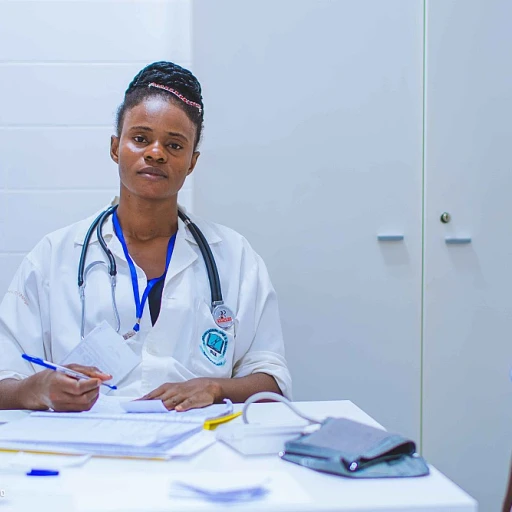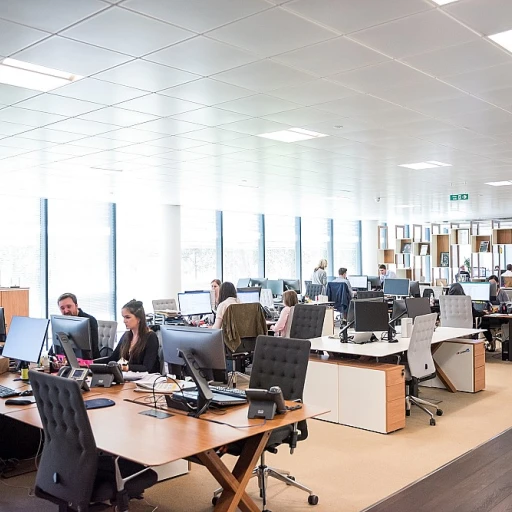
Understanding the Skills Gap
Identifying and Comprehending the Skills Gap
In today's fast-evolving workplace, understanding the intricacies of the skills gap has become increasingly essential. Organizations across industries face the urgent task of equipping their workforce with the appropriate skills mix, mainly due to rapid technological advancements and changing market demands. A skills gap indicates a disconnect between the skill set employees possess and the skill set needed to perform effectively in their jobs. This discrepancy can arise in various forms, with technical skills such as data analysis and hard skills like technical training being at the forefront. Equally significant are soft skills, including communication skills and emotional intelligence, that contribute to the overall functionality and harmony within a work environment. The contemporary workplace demands a balance between technical and soft skills, where employees must navigate their specific roles while contributing to broader team dynamics. Notably, learning these skills is not confined to initial job training; continuous skill development is vital for adapting to ongoing work challenges and innovative solutions. Organizations must address these gaps to enhance productivity and foster a workplace conducive to growth and innovation. The challenges in balancing and developing these skills will be explored further in subsequent sections. To delve deeper into how addressing these issues could pave the path to success, consider exploring this insightful article on closing the skills gap. Understanding these fundamentals sets the stage for a deeper examination into the individual roles of technical and soft skills within the modern workforce.The Role of Technical Skills
The Critical Role of Technical Expertise
In today's rapidly evolving job market, technical skills are more crucial than ever. These skills, often referred to as hard skills, encompass a wide range of abilities that are specific to particular tasks or industries. From data analysis to software development, technical skills are essential for employees to perform their roles effectively and efficiently.
Technical skills training is a fundamental component of workforce development. Organizations invest heavily in training programs to ensure their team members are equipped with the necessary skills to meet the demands of their roles. This includes everything from learning new software applications to understanding complex data sets. The focus on technical skills is not just about keeping up with technological advancements but also about maintaining a competitive edge in the marketplace.
However, the emphasis on technical skills should not overshadow the importance of a balanced skill set. While technical expertise is vital, it must be complemented by soft skills to create a well-rounded employee. The integration of both technical and soft skills is what truly drives success in the workplace.
For instance, while a software engineer may excel in coding, their ability to communicate effectively with team members and stakeholders is equally important. This balance between technical and soft skills is what enables employees to work collaboratively and solve problems efficiently. As organizations strive to close the skills gap, they must recognize the need for a holistic approach to skills development.
To explore more about how organizations can address the skills gap and prepare for future success, you can read about closing the skills gap.
The Importance of Soft Skills
The Vital Role of Interpersonal and Emotional Capabilities
In the dynamic landscape of today's workplace, the emphasis on soft skills is growing increasingly important. These skills, often more subtle and intangible than their technical counterparts, are proving essential for not only personal growth but also the growth of the organization as a whole. Communication skills, for example, are critical for ensuring that teams work effectively and efficiently. In environments where technical skills are in abundance, the ability to convey concepts clearly and collaborate with team members stands out as a valuable asset. Employees who hone their communication skills will find they can bridge gaps, leading to more cohesive projects and better organizational outcomes. Beyond communication, skills like emotional intelligence play a crucial role in the workplace. Emotional intelligence allows individuals to recognize and understand their own emotions and those of others. This awareness can lead to improved leadership and help in managing conflicts within teams. Developing these capabilities is not confined to specific job roles; they permeate all aspects of work. Problem-solving capabilities are another key aspect of soft skills that complement technical skills. While data analysis and other technical training can provide the hard skills necessary for a role, the ability to tackle challenges in innovative ways distinguishes exceptional professionals. It's these soft skills that foster creativity and facilitate learning and development. A holistic approach to skills development therefore often incorporates targeted skills training in both hard and soft competencies. A balanced skill set maximizes an employee's potential and prepares them for future trends in skill development. Organizations investing in this effective workforce development strategy are already witnessing the benefits of a well-rounded team prepared to tackle any challenge.Challenges in Balancing Skills
Overcoming the Skill Balancing Act
In today’s competitive job market, organizations are struggling to strike the right balance between technical and soft skills among their employees. One of the primary challenges is the rapid pace of technological advancements. This affects not only the skill set required but also how quickly technical training becomes outdated. Continuous learning and development are essential to stay relevant. Moreover, technical skills, while critical, are not the only considerations for job success. Skills such as problem solving and data analysis are integral but must be complemented by effective communication skills and emotional intelligence. Many employees find it difficult to excel in roles that require a blend of skills technical and soft, highlighting the importance of tailored skills training. Organizations also face challenges in skills development, related to individual learning curves and preferences. Team members with specific technical prowess may need more support in enhancing their soft skills. Conversely, those who excel in communication may require targeted technical training to boost their proficiency in hard skills. Typically, workplace dynamics can complicate this balancing act. Employees and teams composed of diverse skill sets often encounter difficulties in collaboration. This requires leadership to actively foster an environment promoting both teamwork and individual growth. People with strong soft skills can help mitigate conflicts and improve team synergy, serving as bridges between different skill sets within the organization. In conclusion, to successfully navigate the skills gap, organizations must focus on customized training initiatives. Leadership and human resources must identify specific areas within their teams where skill sets can be expanded. By doing so, organizations will not only bridge the skills gap but also enhance overall workplace productivity.Strategies for Bridging the Gap
Approaches to Skill Enhancement and Integration
To bridge the skills gap effectively, organizations must implement a multifaceted approach that addresses both technical and soft skills. This requires a well-rounded skills training program that caters to the diverse needs of employees. Ensuring the workforce possesses a robust skill set capable of meeting today's job demands involves strategic planning and execution.- Customized Training Programs: Creating training regimes that target specific skill deficiencies can significantly improve technical skills and soft skills within a team. Tailoring learning experiences for different roles ensures that team members acquire essential abilities, whether they are related to data analysis, communication, or leadership.
- Blended Learning Approaches: Combining traditional training methods with modern e-learning platforms can enhance the effectiveness of skills development. By integrating online courses with on-the-job training, employees can apply newly acquired technical and soft skills in real-world contexts, solidifying their knowledge and work proficiency.
- Mentorship and Coaching: Pairing less experienced employees with seasoned professionals enriches the learning process. This method facilitates the transfer of critical job-specific insights and helps nurture communication skills and emotional intelligence, pivotal for workplace success.
- Fostering a Culture of Continuous Improvement: Encouraging ongoing skill acquisition and professional development is crucial for minimizing the skills gap. Organizations should promote an environment where learning is prioritized, and employees are motivated to pursue new skill sets and advance existing ones.
Future Trends in Skill Development
Emerging Skill Needs in Tomorrow's Workforce
As the modern workplace continues to evolve, the development of skill sets must keep pace to meet the demands of tomorrow's workforce. This is especially true in terms of both technical and soft skills. Organizations are becoming increasingly aware that a tailored approach to skills training is crucial to remaining competitive. Here's a look at the future trends in skill development that will help balance these needs.- Digital Literacy and Data Analysis: With technology's growing role, skills technical such as data analysis are becoming essential. Training programs are focusing more on equipping employees with the ability to interpret and utilize data effectively.
- Emphasis on Emotional Intelligence: Soft skills like emotional intelligence and problem solving will continue to play a pivotal role. These skills help team members navigate complex interpersonal dynamics at work.
- Blended Learning Approaches: Organizations are adopting blended learning strategies that incorporate both traditional classroom and e-learning platforms. This approach caters to diverse skill sets, ensuring both soft skill and hard skill development.
- Continuous Learning and Development: Lifelong learning has emerged as a critical factor in adapting to change. Encouraging employees to engage in continuous learning will help keep their skills relevant in a rapidly changing job environment.
- Customized Skills Training: Tailored training programs targeting specific skill gaps within an organization ensure that employees achieve a balanced skill development. This focused approach aids in nurturing both leadership and technical training.












